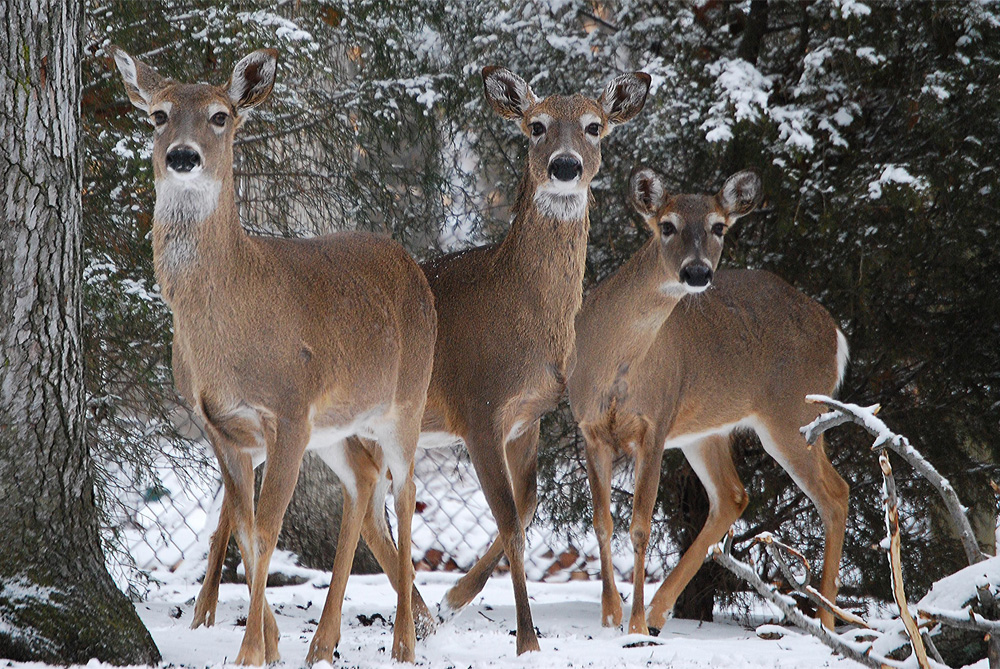Category:
MammalsAbout

White-tailed Deer
Today, the white-tailed deer has one of the largest wild animal populations found in Virginia. This highly-adaptive mammal can be seen wandering the grounds of one’s garden, backyard or a neighboring forest. Like elk, moose and caribou, the white-tailed deer is part of the Cervidae family. This family has split-hoofed feet and no teeth on the top row.
The white-tailed deer’s most distinctive characteristic is found in its name: the patch of pale white fur underneath its tail. The deer lifts its tail, exposing the white patch of fur, to warn other deer that danger is nearby. When alarmed the deer will also release a musky scent from a gland found in its hind legs between its hock and foot called the metatarsal. White-tailed deer also release other scents to communicate, such as to advertise their presence or to leave a path.
White-tailed deer are very social. A family group consists of a doe with one or more fawns, while a bachelor group encompasses two to four bucks. During mating season these groups intermingle. Bucks fight other males to assert their dominance and impress the females. They clash antlers and shove one another until one of the competitors quits. Antlers are also used to create scratch marks on tree bark and the ground to alert females of their presence and antler size. Bucks with better nutrition will generally have stronger and larger antlers.
White-tailed deer are herbivores. They consume an array of trees, including dogwood, pines and oaks as well as shrubs. They also eat apples, acorns and various crops. Within a single day one white-tailed deer can consume up to nine pounds of vegetation.
The average full-grown buck will weigh about 140 pounds, be almost seven feet long (including its tail) and three feet tall from shoulder to base. When healthy these deer are phenomenal jumpers, runners and swimmers. They can jump up to 25 feet and sprint up to 35 miles per hour. They also have acute hearing, eye sight, smell and awareness. These skills play a major role in this mammal’s ability to escape its predators.
White-tailed deer have several natural predators, such as coyotes and bobcats, but their biggest threats are dogs and people. Once depleted by unrestricted hunting, deer have rebounded dramatically. Populations are now controlled primarily through regulated hunting.





